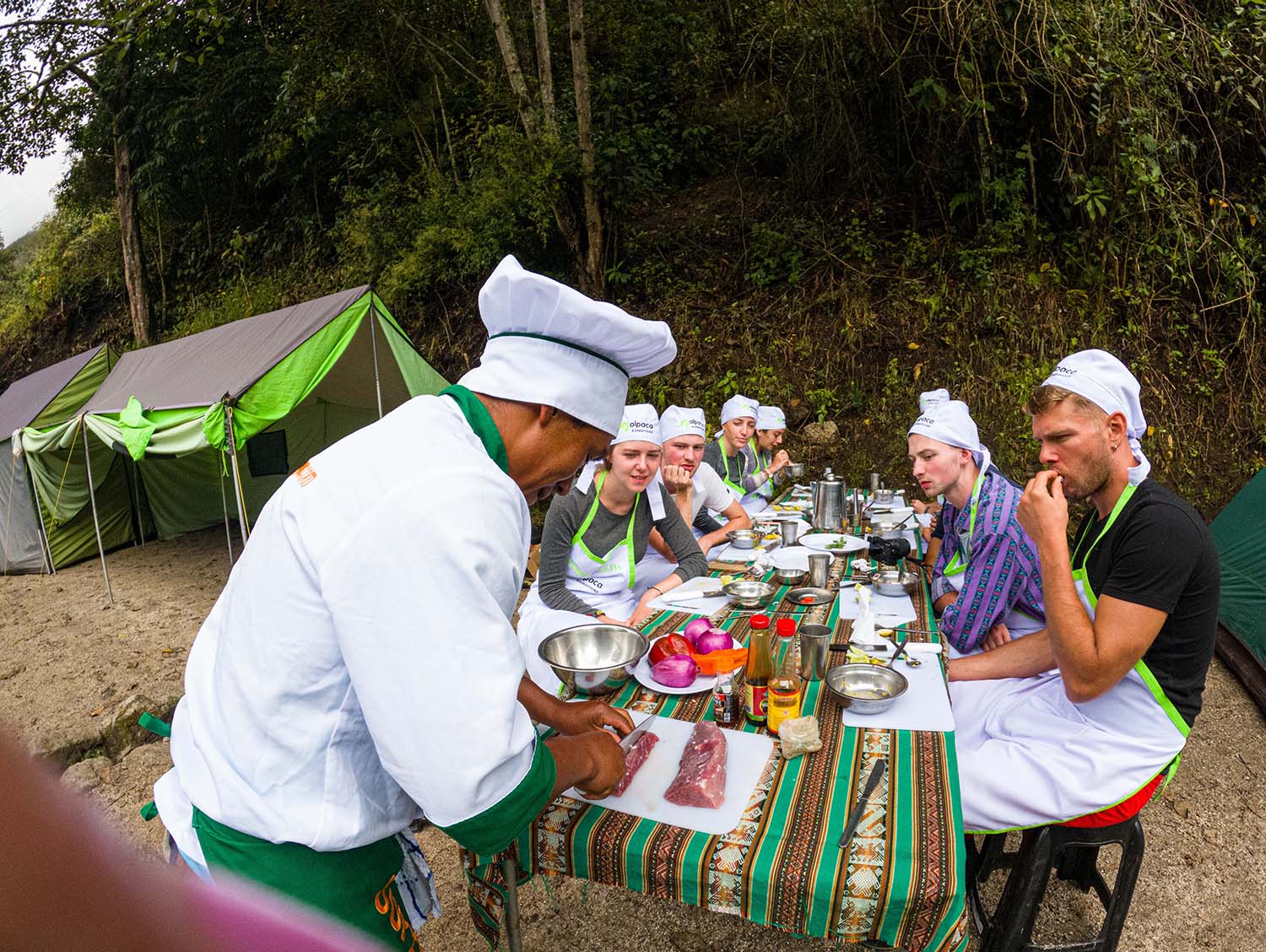Exploring Machu Picchu: Llamas, Vicuñas, and Alpacas – Iconic Species and How to Tell Them Apart
Machu Picchu, one of the New Seven Wonders of the World, is a breathtaking site located high in the Andes Mountains of Peru. Built by the ancient Inca civilization, it is not just a marvel of engineering but also a symbol of their rich culture and deep connection with nature. Visitors from all over the world come to Machu Picchu to explore its fascinating ruins, learn about Inca history, and enjoy its stunning mountain scenery.
One of the most delightful parts of visiting Machu Picchu is spotting the friendly animals that live there. The region is home to three iconic Andean species: llamas, alpacas, and vicuñas. These animals have been part of the Andean way of life for centuries. Each species is special in its own way, contributing to the culture, economy, and beauty of Peru.

In this blog, we’ll explore these amazing animals, learn how to tell them apart, and understand their unique roles in Andean culture. Whether it’s the hardworking llama, the fluffy alpaca, or the elegant vicuña, each adds charm to the Machu Picchu experience. Let’s dive in and discover what makes these creatures so special!
Alpacas: The Plush and Social Species
Alpacas are one of the most beloved animals of the Andes. They are primarily raised for their soft, luxurious wool, which is used to make warm and cozy clothing like sweaters, scarves, and blankets. This wool is one of Peru’s most important exports and is valued around the world for its quality and warmth. Farmers in the Andean regions take great care of these gentle animals, ensuring they are healthy and well-fed.
Alpacas are smaller than llamas and have rounder faces with big, curious eyes. Their fleece is thick and soft, making them look like walking clouds. Unlike llamas, alpacas are not used for carrying loads—they are cared for mainly for their wool.
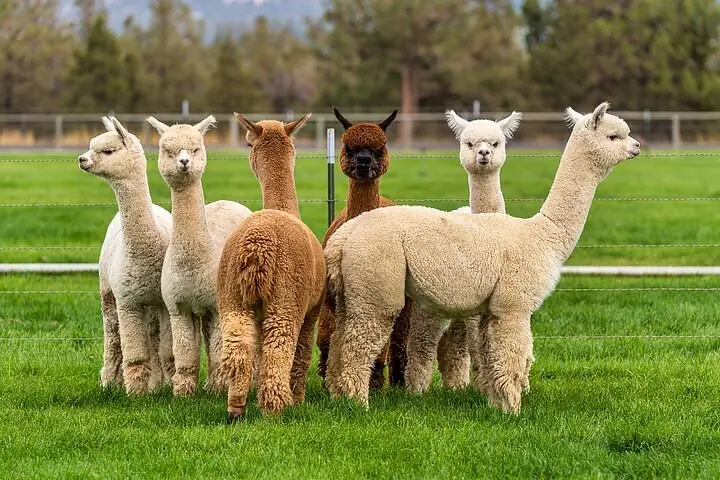
One interesting fact about alpacas is that they are very social animals. They love to stay in groups and often hum softly to communicate with each other. Their friendly and peaceful nature makes them a favorite among visitors to Peru.
If you visit Machu Picchu or the Sacred Valley, you might see alpacas grazing in high-altitude pastures. They are a common sight in these breathtaking landscapes and add a charming touch to the region’s natural beauty.
Vicuñas: The Wild Relatives of the Andes
Vicuñas are the wild cousins of llamas and alpacas, living in the high-altitude regions of the Andes. Unlike their domesticated relatives, vicuñas are free-roaming animals known for their incredibly soft and fine wool, which is considered one of the most valuable in the world. Because of this, they are protected by Peruvian law to ensure their survival and prevent overhunting.
Physically, vicuñas are smaller than both llamas and alpacas. They have a slender body, long neck, and a graceful appearance that makes them look elegant. Their light brown coat and white underbelly help them blend into the grassy highlands where they live. Even though their wool is prized for its softness, it can only be collected from wild vicuñas every few years, making it rare and expensive.
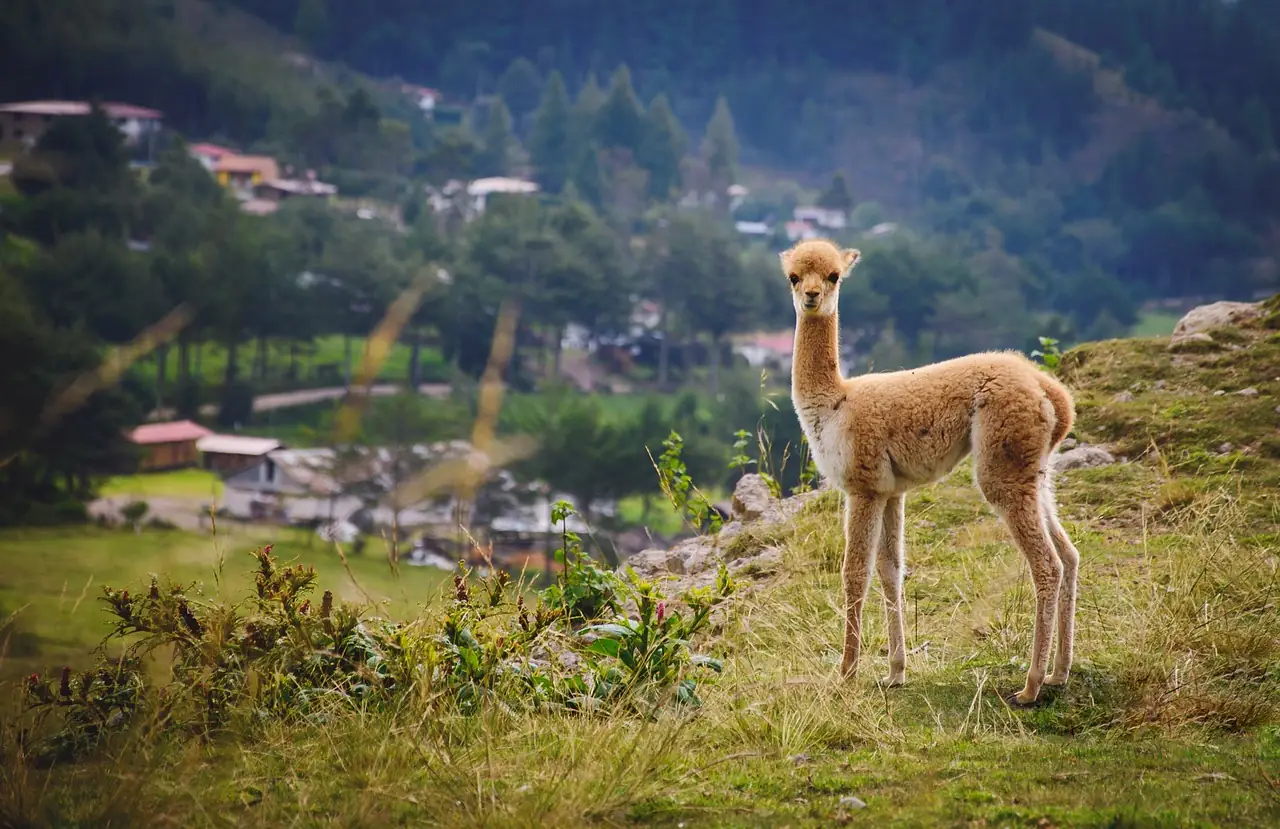
Vicuñas also have a special place in Andean culture. During the Inca Empire, they were considered sacred animals and a symbol of wealth and spirituality. You can find vicuñas in the high mountain regions of Peru, sometimes in areas close to Machu Picchu. Spotting these graceful creatures in the wild is a special experience that adds to the magic of exploring the Andes.
How to Tell Them Apart: Key Differences
If you visit Machu Picchu, you’ll notice llamas, alpacas, and sometimes even vicuñas in the area. Here’s how to tell them apart:
- Size: Llamas are the biggest of the three. They can stand tall and look very strong. Alpacas are smaller and look fluffier, while vicuñas are the smallest and most delicate.
- Face Shape: Llamas have long faces with a more angular look. Alpacas have shorter, rounder faces that make them look very cute. Vicuñas, on the other hand, have tiny, sleek faces that look elegant.
- Behavior: Llamas are often used as pack animals, which means they help carry things. They are independent and can even be a little stubborn. Alpacas are very social and love being in groups. Vicuñas, though, are wild animals and prefer to stay free and roam in the mountains.
- Fleece: Alpacas are known for their incredibly soft and warm wool, which is used to make cozy clothing. Vicuñas, however, produce the finest and most expensive wool in the world. Llamas, while useful for many things, don’t have wool as soft as the other two.
When visiting Machu Picchu with Alpaca Expeditions, you’ll have the chance to spot and learn more about these amazing animals!
The Cultural Significance of These Species in Peru
Llamas, alpacas, and vicuñas are more than just animals in Peru—they hold deep cultural and historical importance. During the Inca Empire, these species were vital to daily life. Llamas were used as pack animals to carry goods across the Andes, making trade and transportation possible. Alpacas were treasured for their soft wool, which the Incas used to make warm clothing and beautiful textiles. Vicuñas, the wild cousins, were seen as sacred. Their fine wool was considered so precious that only Inca royalty could wear garments made from it.
These animals also had spiritual significance. The Incas believed llamas, alpacas, and vicuñas were gifts from the gods, representing their strong connection to nature. Even today, they are symbols of Peru’s rich history and culture.
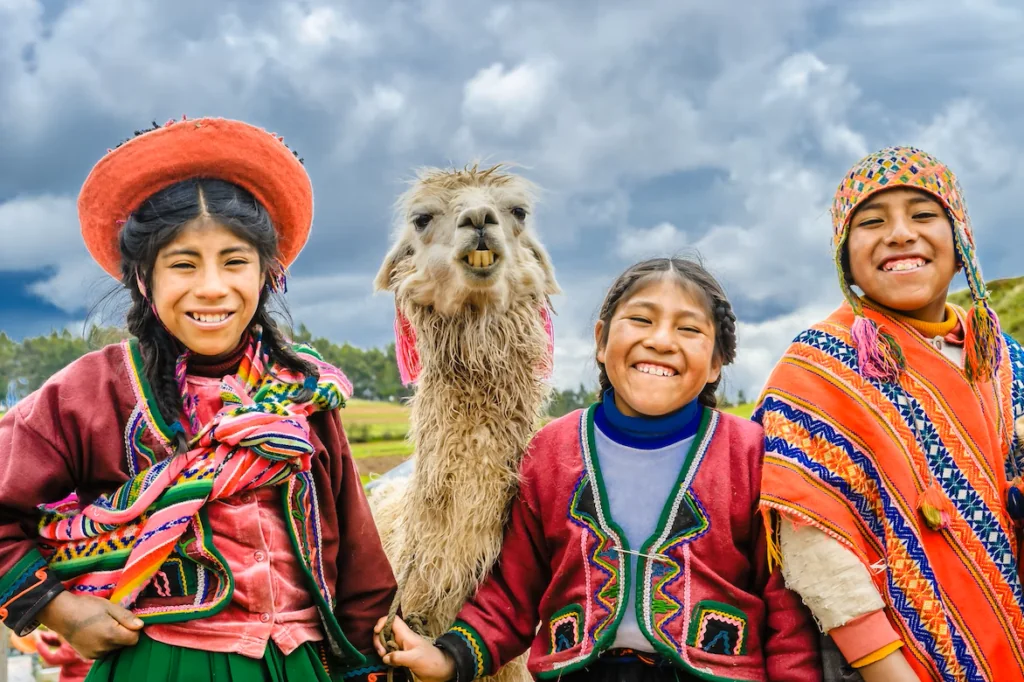
We are committed to protecting these species and their habitats. Our tours are designed to minimize impact on the environment, ensuring that the llamas and alpacas you meet continue to thrive in their natural surroundings. We also educate travelers about these animals’ importance, helping to preserve their legacy. By choosing us, you not only explore Machu Picchu but also support sustainable tourism that respects Peru’s wildlife and traditions.
Conclusion
The llamas, alpacas, and vicuñas of Machu Picchu are more than just animals; they are a beautiful part of the Andes and hold a special place in Inca history and culture. Their unique features and roles make them stand out. Llamas were the hardworking helpers of the Incas, alpacas provided soft wool for clothing, and the wild vicuñas symbolized wealth and beauty with their precious fleece. Together, they show the deep connection between the Andean people and their environment.
When you visit Machu Picchu with Alpaca Expeditions, you’ll not only explore the amazing ruins of the Inca Empire but also see these incredible animals in their natural home. Imagine standing on ancient trails surrounded by breathtaking mountains, spotting a llama grazing or an alpaca wandering nearby. These moments bring the magic of Machu Picchu to life in a way you’ll never forget.
We are proud to offer guided tours that combine adventure, history, and nature. Join us to learn about these iconic animals, enjoy the stunning scenery, and discover the fascinating traditions of the Andes. Let us help you create memories that will stay with you forever. Your adventure with us begins here!
Alpaca Expeditions Recognitions
ISO (International Organization for Standardization)
In the pursuit to stand out from the rest, Alpaca Expeditions has obtained four ISOs plus our carbon footprint certificate to date. These achievements result from our efforts to implement the internationally-recognized integrated management system. They also represent our commitment to all of our clients and staff of operating sustainability and responsibility in every way possible.
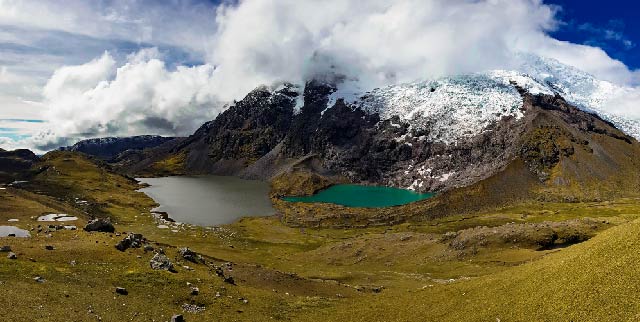


































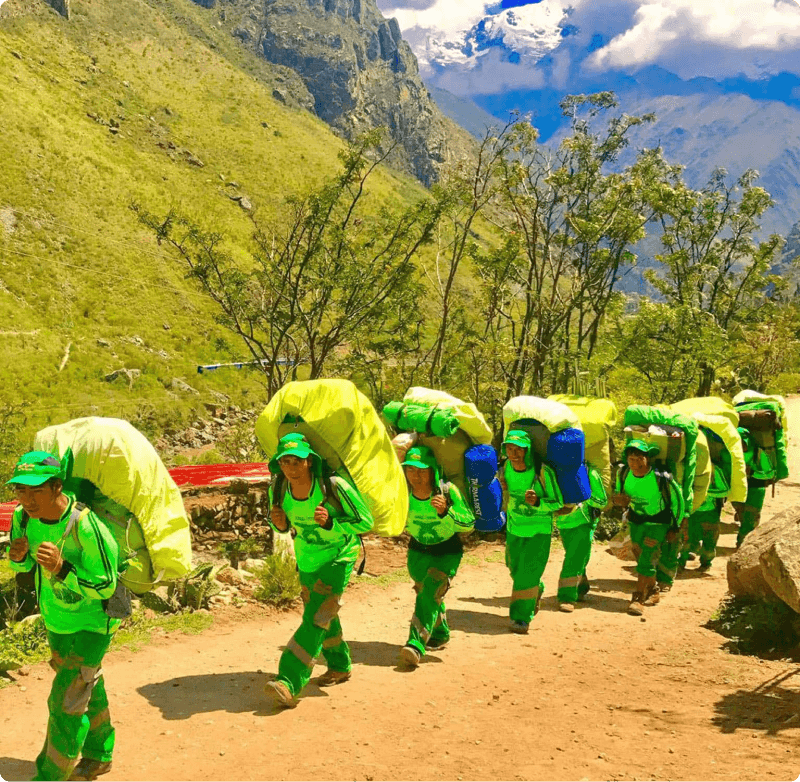 Porters will carry up to 7 kg of your personal items, which must include your sleeping bag and air mat (if you bring or rent one). From us, these two items weigh a combined total of 3.5 kg.
Porters will carry up to 7 kg of your personal items, which must include your sleeping bag and air mat (if you bring or rent one). From us, these two items weigh a combined total of 3.5 kg.